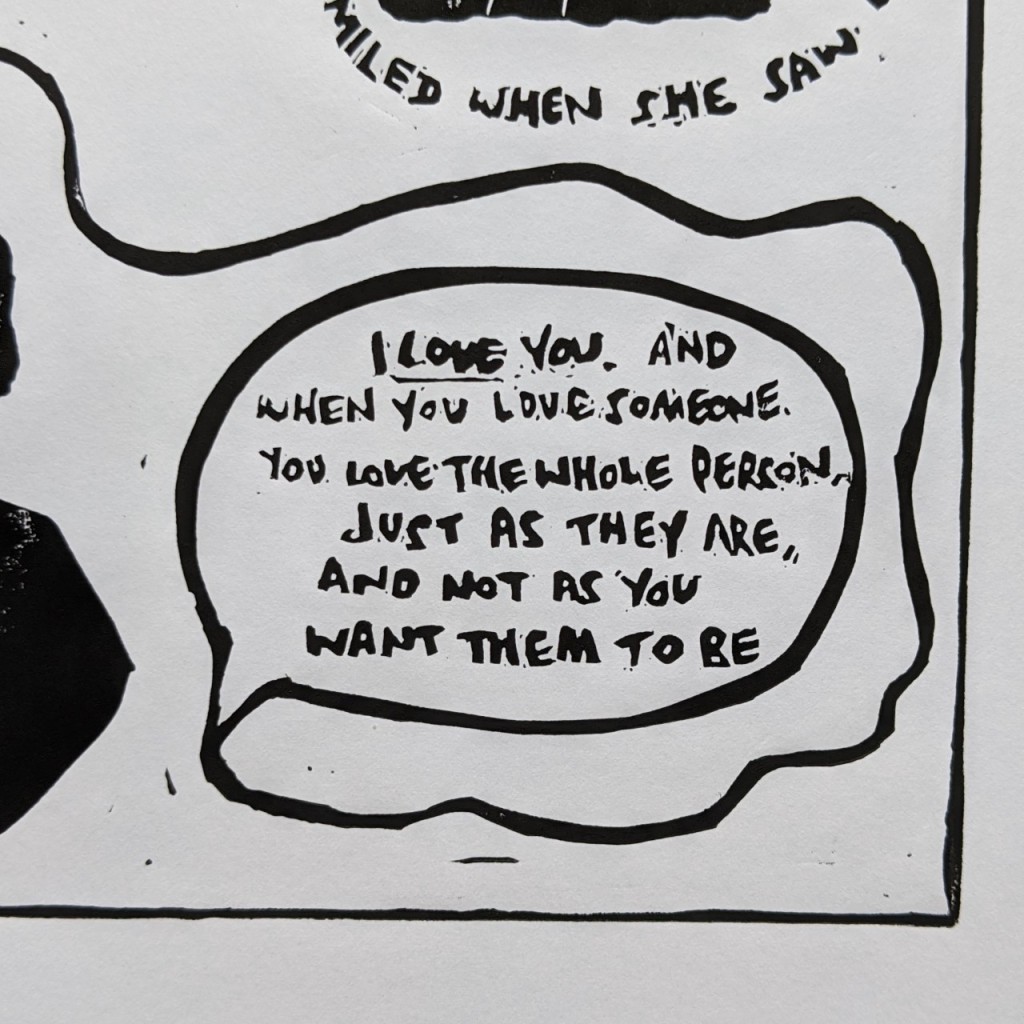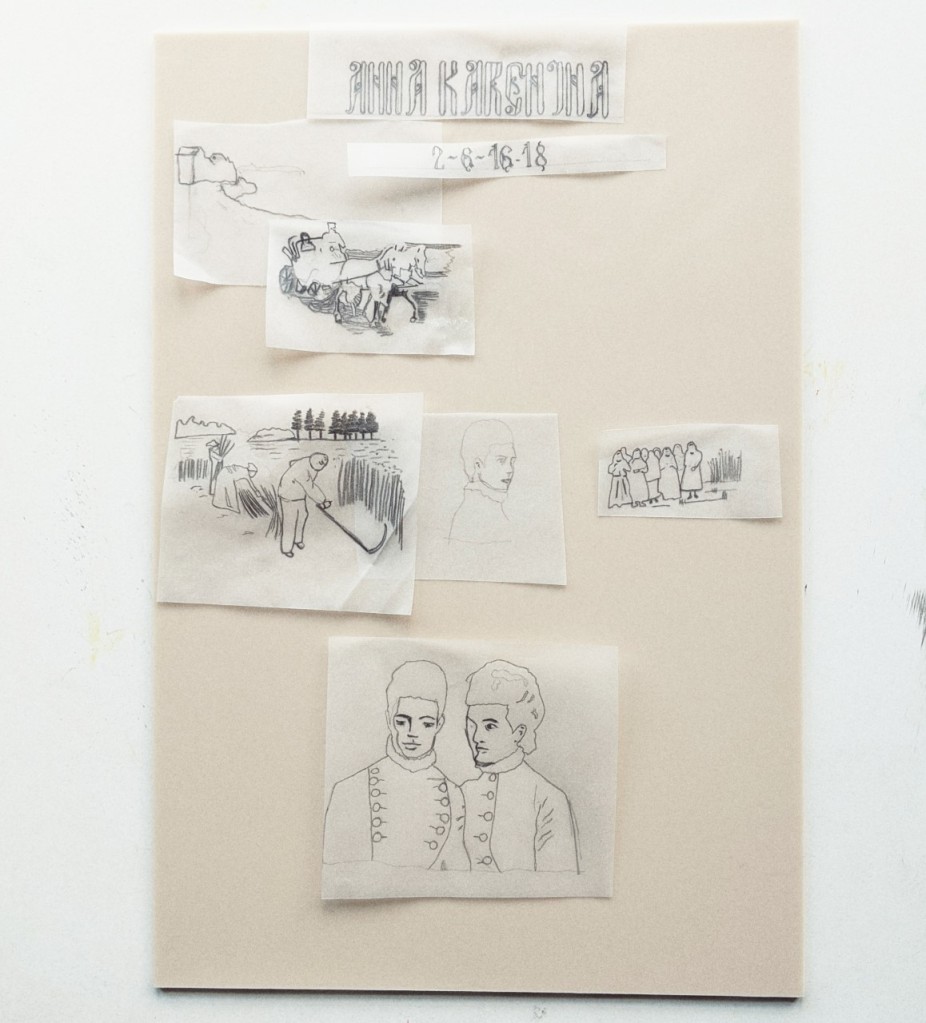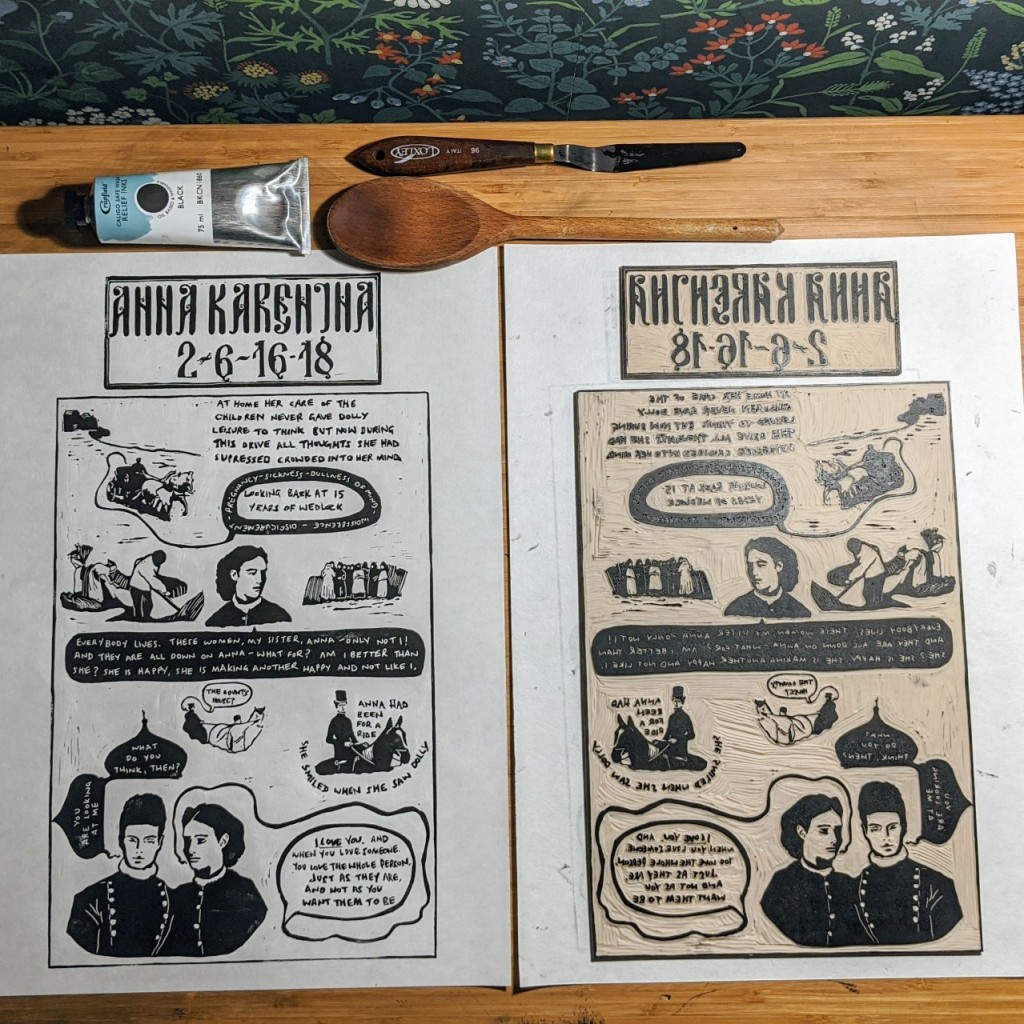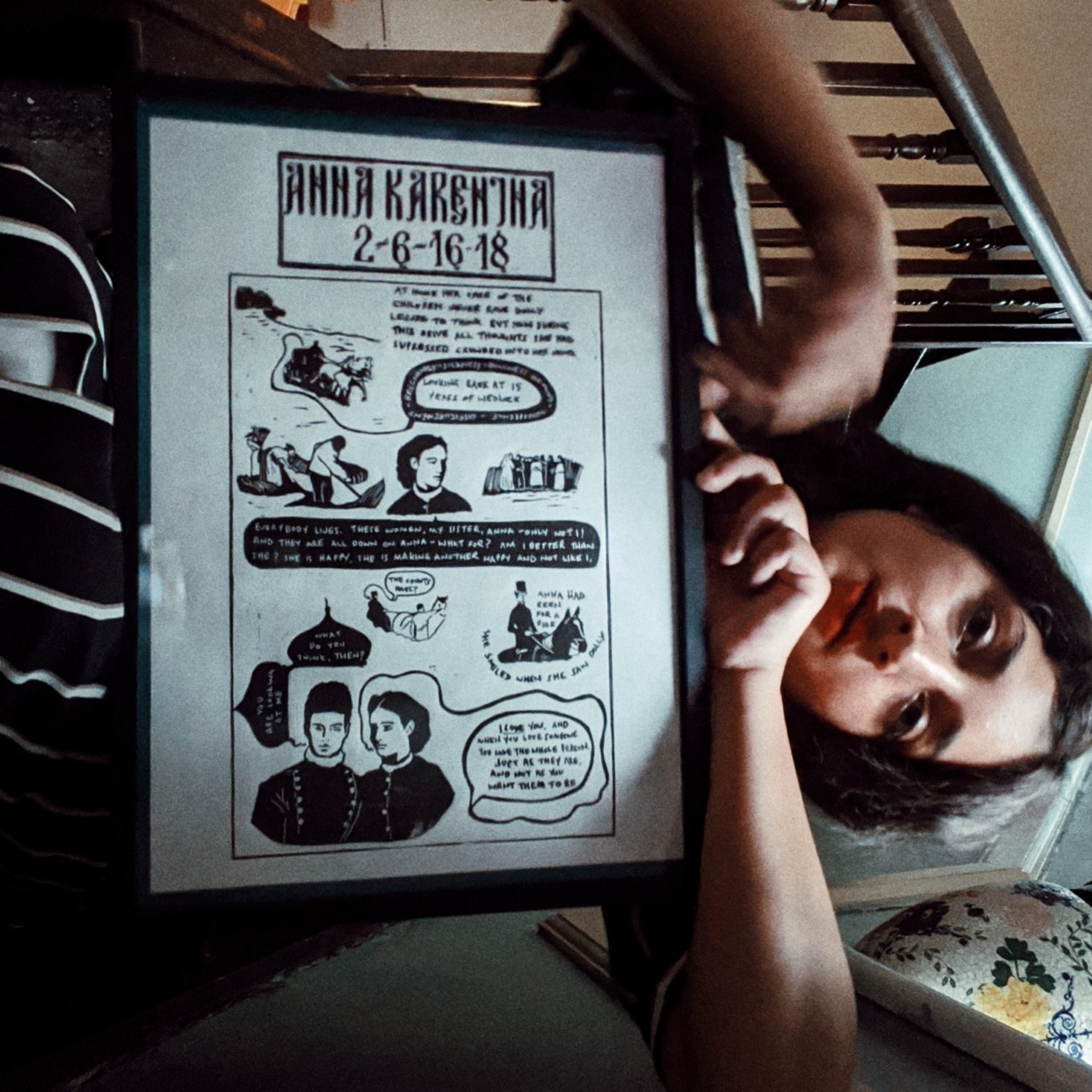Like so many others, my favourite book is Tolstoy’s Anna Karenina. As a print maker, it really was just a matter of time before I incorporated this tale of love, betrayal, guilt and passion in my work. The themes Tolstoy explores in this book are universal, and strike a chord with people almost 150 years later. Since I first read this book many years ago, I have also read the feminist critiques of Tolstoy in general and Anna Karenina in particular. While I would call myself a feminist, I don’t accept the critique that has been lain at this book for reducing the titular character to a suicidal wreck following the discovery of her sexual desire. It is a reductive, retrospective judgement that neither Anna nor Tolstoy (on this occasion) are deserving of. I was reading Sofia Tolstoy’s diaries and came upon the night she writes of her husband telling her of another Anna, a real life Anna, who had thrown herself under the wheels of a moving freight train at their local station. Tolstoy remarks that he wants to write about what drives a woman to commit such an act, and though he mentioned the morality of the real life Anna, he spends the next four years giving his own Anna a voice in his book.
The chapters I have chosen to first cover in my work are the thoughts and considerations of Anna’s sister in law, Dolly. Tolstoy does justice in giving three very different women voices in his book. In my block Dolly reflects on the course of her adult life, looking at her marriage as one of tolerance of her husband’s infidelities. Her thoughts have been carved out on my block as the translators, Louise and Aylmer Maude, have written them. Dolly’s reflection takes place while she observes the Russian countryside, her sight is taken with images of women carrying ready-twisted sheaf-binders on their shoulder against the backdrop of rye fields. It’s difficult not to accuse Dolly of the ‘poor little rich girl’ routine as she bemoans her adult life, but my personal thought is that it is contentment that Dolly craves and which she sees when she looks at these women and her own sister by virtue of the fact that they have carried on with their lives within the circumstances they are given. She comments on the agency Anna has taken of her own path in life, juxtaposed against her own seemingly constricted life choices. It’s a heavy train of thought that Dolly embarks on in my block, admittedly it provided great opportunities to capture the journey from town to country in her borrowed caleche on my block. The heaviness I left to Tolstoy’s words and a look of resignation on Dolly’s face that I hope the audience recognises as such.
Ultimately, I wanted to cover these chapters because they contain my favourite quote from a Tolstoy novel, a quote on unconditional love and one that is passed between two female characters and is so often overlooked for the other examples of love in this book. We see Anna in these chapters through Dolly’s eyes. Anna’s guilt, ushered in by a sightless tick tocking, and desperation to retain Vronsky’s affection for which she sacrificed time with her son, is not yet apparent to Dolly, that comes in the following chapters. Dolly sees her happiness as contentment, as a consequence of claiming her agency. She has no need to assuage Anna’s internal conflict, what Dolly says to Anna is unforced and from the heart: “I love you. And when you love someone, you love the whole person, just as they are, and not as you want them to be”.

When I started working on this, we were in a pre-coronavirus world (yes, it was many months ago!), I spent my nights reading and rereading these chapters. Picking out speeches in the text, and placing them against the scenery, my notes were not very neat:
Dolly in a caleche – coachman and office clerk in the box, four horses
Village street
Small bridge
Peasant women with ready-twisted sheaf-binders on their shoulders.
You can tell which parts made the block and which were omitted to spare my wrists the effort in carving, I do hope Tolstoy would forgive me. I make up my sketches on tracing paper so that I can play around with the composition on the block before carving. The lettering is considered next, also written out on tracing paper so that I can see how it would appear against the sketches. In some cases the sketches need to be made bigger, so the writing doesn’t overshadow it. In other cases I see I have more room to play around with the lettering. How about making it appear curvaceous as a smile when I write, “She smiled when she saw Dolly”? Yes, that fits in there.

As a home print maker, my studio is a small corner that occupies my bedroom. My resources are those that I have accumulated over the years. This block was almost exclusively carved with my Pfeil L11 gouge and a recently acquired Flexcut Mirco Palm set. Once the images had been transferred to the block it took a few hours to complete, spread over a few days. Carving is my favourite part of the process, and one that I am quickest at. The sketches take longer than it takes the ink to dry. Each print is hand carved using Caligo ink in black and a wooden spoon to ease out the impression. It takes about ten minutes of “spooning”, that is spoon fondling the paper, to pull a decent print from both blocks simultaneously. I know the nuances of this block, the corner where the border needs a little more coaxing than others, the shoulder that requires a firmer grip on the spoon to pull a crisp print. I call this print my June baby, so well I know it.

As a printmaker, with an established online shop, it would be dishonest to discuss this block without mentioning that it was carved in order to sell the print. The title block that accompanies this print is a way to commercialise this interpretation, if you have this hanging on your wall, a fresh audience will know that this is Anna Karenina, book two, part six, chapter 16-18. I searched for a font that incorporated Cyrillic type with Latin letters for the English reader. However, this is the start of a project I have wanted to see in completion in any form for many years. I am an avid reader, and that includes graphic novels. I have enjoyed the graphic novel versions of many loved books but not in English of my favourite book. This block is the beginning of that journey, which I hope to realise myself. It may take a long time, but I know that when this project is completed and I look back at the beginning, I can say that I started with my favourite quote from the book and continuing on in this way, this will be a labour of love for me.


Loved reading the process of this print coming together, especially how you used the sketches on separate bits of tracing paper to arrange your composition, that’s a great idea! I love your refreshing honesty in carving this piece with the goal to sell the print. Can’t wait to read more blog posts!
LikeLike
Hi Jeralee, thank you for your comment – it’s my first one! And for reading all the way through, that’s deep x!
LikeLike